10 Proven Tips For Customer Retention & Loyalty On Shopify
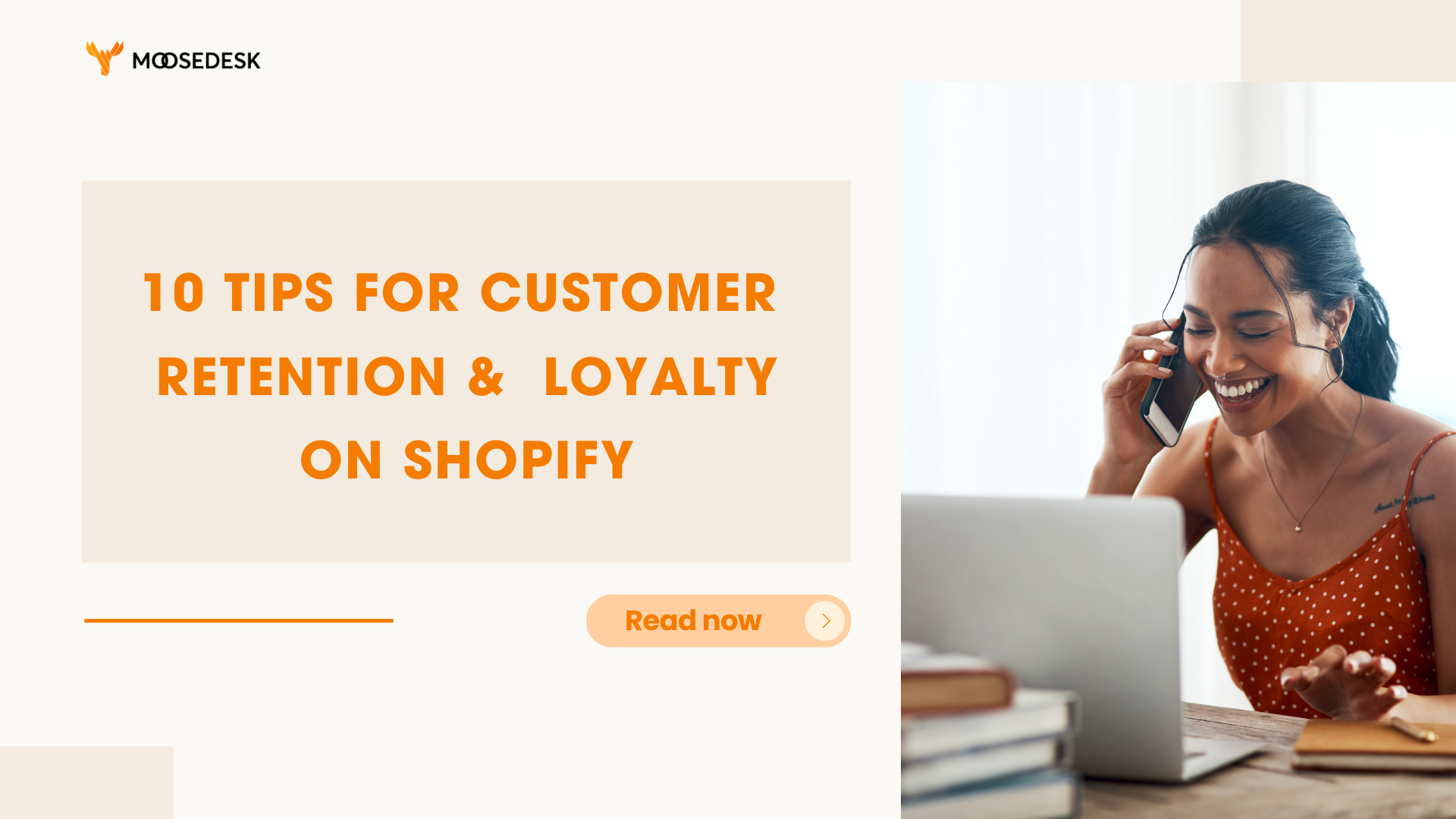
Customer retention and customer loyalty are crucial for Shopify merchants to increase revenue. Businesses nowadays often invest a huge amount of money into getting new customers. But they forget to focus on existing customers, who can help them reach the goals more quickly. In this article, we will introduce a curated list of 10 actionable tactics. They are only designed to help Shopify merchants nurture lasting relationships with customers.
Customer Relationship management on Shopify
Retention vs. Loyalty: What is the difference?
First, we should understand the definition of customer retention and loyalty to see how these two factors are related to each other.
Customer retention indicates how many customers stay with the business within a period. This factor is also related to the ‘churn rate’, one of the most important metrics for all online or in-store businesses. But keep in mind that customer retention rate highlights the percentage of customers who stay with you. Meanwhile, the churn rate is the percentage of customers who leave.
Customer royalty means whether customers choose a business over thousands of other competitors out there. A high rate of customer loyalty means that a customer will consistently respond positively to a brand and also be willing to engage.
How to measure customer retention and customer loyalty?
Customer retention
There is a simple formula to calculate to customer retention rate (CRR). It consists of 3 main elements: the number of customers at the beginning, the number of customers at the end, the number of new customers during the measurement period.
Retention rate (%) = (Ending customers – New customers)/ Beginning customers

Customer loyalty
When it comes to customer loyalty, it’s usually more difficult to measure than customer retention rate. Because loyalty is an emotion. Yet, there are a few metrics that can be used to grasp a basic understanding of the customer loyalty level. Some of the most commonly used metrics are:
Net Promoter Score (NPS)
Net Promoter Score is used to measure customer loyalty based on their tendency to recommend products or services to other people. Here is what the formula looks like:
NPS = (% Promoters) – (% Detractors), in which:
Promoters (score 9-10): Customers who are highly satisfied and likely to recommend.
Passives (score 7-8): Customers who are not willing enough to promote
Detractors (score 0-6): Customers who are dissatisfied. They also tend to spread negative word-of-mouth.
Ranging from -100 to +100, the NPS score is considered to be generally good if it is above 0. The higher the score, the better it is!
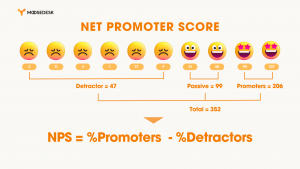
Ranging from -100 to +100, the NPS score is considered to be generally good if it is above 0. The higher the score, the better it is!
Customer lifetime value (CLV)
This metric is used to calculate the total revenue a business can expect from a customer throughout their relationship. This is one of the must-have metrics for any Shopify merchant nowadays.
The formula looks like this:
CLV = Average Purchase Value × Average Purchase Frequency × Customer Lifespan.
In which:
- Average Purchase Value: This is calculated by adding up the total revenue from all purchases and dividing by the number of purchases
- Average Purchase Frequency: The total number of purchases is divided by the number of unique customers.
- Customer Lifespan: Estimate how long a customer is likely to continue purchasing from your business

>> Understand Customer Lifetime Value and how to improve this metric
Customer Engagement Score (CES)
To measure how engaged customers are, we use these CES metric. This is also an effective way to measure customer loyalty on Shopify.
Now we should identify which are the engagement touchpoints. Some touchpoints can be:
- Shopify store visits
- Email opens
- Product purchases
- Social media channels
After that, we assign a weight on a scale from 1 to 10 for each touchpoint based on how important it is to your business goals and objectives. For example, a purchase can have a weight score of 8, while a social media like accounts for only 1.
Then, we can use event tracking tools to count the number of events andhow many users interact with your Shopify store. So, it is vital to set up store analytics right from the beginning.
Having all these inputs, now the formula for Customer Engagement Score (CES) looks like:
Customer Engagement Score = (Weight event 1 x Number of events 1) + (Weight event 2 x Number of events 2) + …
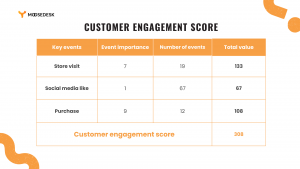
10 Proven Tips For Customer Retention And Loyalty On Shopify
Tip 1: Tailor the shopping experience
Stores that are customized for specific needs of the target audience can improve your customer retention rate. Product recommendations are no exception.
Fortunately, Shopify Partners offers various apps that allow merchants to analyze customer behavior. For example, with Wiser Product Recommendations, merchants can understand customer browsing history, purchase patterns to suggest suitable products.
A great example of brands customizing shopping experiences for customers on Shopify is BlendJet. This Shopify-based business sells portable blenders for worldwide customers. It usually recommends products based on what customers have viewed or bought.
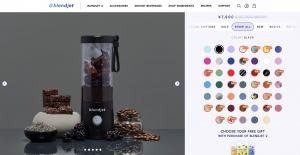
If a customer adds a blender to their cart, BlendJet will suggest more accessories. Travel cups or silicone sleeves are the most common examples.
Tip 2: Create a rewards program
Creating a rewards program on Shopify is a powerful strategy to encourage purchases. With Shopify app partner, merchants can set up and manage their rewards programs easily .
Some popular apps for merchants to create reward programs include BON: Loyalty Rewards Referrals. This Built-for-Shopify app has nearly 1,500 reviews and an average rating of 4.9.
Or let’s try Yotpo, another famous reward program provider on Shopify. This app can also be integrated seamlessly with Shopify stores. Besides, they will allow merchants to design unique programs that offer exclusive perks for customers.
Tip 3: Offer 24/7 customer support
Customers will easily trust brands that can make them feel like their problem is handled carefully. Merchants can now resolve customer issues and increase customer retention with Shopify partners.
Apps like MooseDesk enable merchants to add self-help widgets to their Shopify store. All customer tickets are managed within one dashboard. Moreover, it also allows merchants to build FAQ pages to solve customer issues quickly.

Another example is Gymshark, a successful Shopify brand specializing in fitness apparel. This brand offers 24/7 customer support through live chat on their store and website. They leverage live chat to address inquiries and offer personalized support any time.
This approach ensures a seamless shopping experience and helps build stronger customer relationships. In the end, it helps drive repeat purchases as well.
Tip 4: Use email marketing
This tip may sound familiar with many Shopify merchants as it has been proved to be a powerful strategy to increase engagement, sales and build long-lasting relationships. Besides reaching target audience or maximizing ROI, this tip also helps Shopify merchants foster their connection with current customers and turn them into loyal fans.
To implement email marketing effectively on Shopify, merchants usually follow several manual steps, from building a quality email list, segmenting target audience to creating attractive content. All these steps may be time-consuming, so we recommend using automation tools to streamline these email marketing activities.
Shopify App Store has various types of email marketing apps that can confuse you when you choose an app for the first time. Let’s take a look at some common apps for Shopify merchants, such as Omnisend or Klaviyo. With these apps, merchants can send out regular emails featuring new arrivals, promotions, and exclusive offers, etc. to keep the customrers engaged and eventually made a purchase.
Tip 5: Optimize your website for mobile
Online shopping via smartphones has been on the rise during recent years and visitors to your Shopify are no exception. They look forward to finding the desired products in the most easy and convenient ways and the phone helps them do that in a matter of seconds.
So how can we optimize the website for a mobile-friendly version?
First, let’s check the current performance of your website, both on desktop and mobile. You can use Google PageSpeed Tools to find out the metrics yourself.
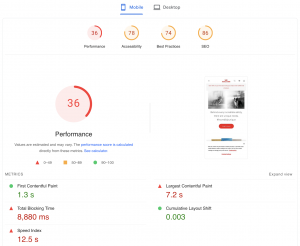
Secondly, merchants can select a Shopify theme that is mobile-responsive. It means that the screen sizes are automatically adjusted to fit with any mobile device.
Don’t forget to optimize the page load speed to ensure your Shopify store loads quickly on mobile devices. Besides, it is also advised to use clear and intuitive menus, buttons, and layouts to streamline the navigation and design of your Shopify website.
Tip 6: Create interactive content
Interactive content plays a key role in fostering a deeper connection between customers and the brand. It involves elements that encourage users to actively participate while browsing your Shopify store, which can increase the likelihood of engagement and conversion for your business.
One brilliant way to create interactive content is to build a shoppable lookbook of your products. Having an attractive product gallery will encourage visitors to click on items or make purchases directly.
Try this Covet Instagram Feed & Reviews app for a visually appealing and aesthetic vibe for your store. Remember to use concise and scannable text, clear fonts, and a clickable call-to-action button too!

Tip 7: Provide excellent post-purchase support
Providing excellent post-purchase enables Shopify merchants to improve customer satisfaction, foster loyalty, and encourage repeat purchases. Post-purchase support refers to the service provided to customers after they have completed a transaction, including order fulfillment, shipping, returns, and ongoing customer service.
Among those factors, returns and exchanges seem to be the most common one that usually happens to Shopify merchants. Therefore, when creating returns and exchange policies, remember to provide easy-to-follow instructions and offer options like prepaid return labels or store credits to facilitate the process.
To save time and streamline your workflow, try out these Shopify apps on return and exchange:
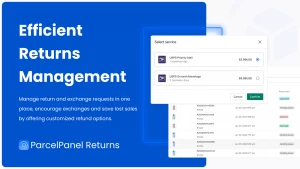
Tip 8: Over-deliver
Any Shopify merchants who wish to foster long-term loyalty can try this exclusive strategy. It involves setting realistic expectations with customers and then surpassing those expectations by delivering exceptional products or services.
For example, merchants can offer unexpected bonuses or gifts with purchases. This could include free samples, exclusive discounts on future purchases, or personalized thank-you notes.
Shopify merchants can use apps like BOGOS to easily add surprise gifts to orders.
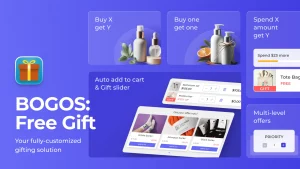
Tip 9: Build a strong community of customers
By nurturing a community around their brand, Shopify merchants can generate more interaction, advocacy, and support among customers, which results in increased brand awareness and customer retention.
An example of a brand that has successfully built a strong community of customers on Shopify is “Pura Vida.” Pura Vida is a Shopify-based brand that sells handmade bracelets and accessories crafted by artisans around the world.
To encourage customers to sign up, Pura Vida created the Pura Vida Club, offering some exclusive perks and limited-edition products through its subscription program. “Subscriptions are one of the most exciting and fastest-growing aspects of our business. It’s also given us a ton of stability that has allowed us to grow with confidence we wouldn’t have otherwise” – said Griffin Thall — Co-founder of Pura Vida.
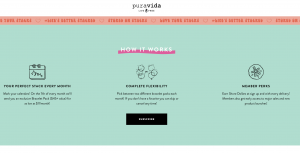
Tip 10: Gather feedback and track key metrics
Last but not least, every merchant should understand how to measure customer satisfaction and identify solutions to improve them. By collecting feedback and analyzing relevant metrics, Shopify merchants can make data-driven decisions to take customer retention and loyalty to a whole new level.
The quickest and easiest way to gather feedback is to collect reviews and testimonials on your Shopify stores. You can encourage customers to leave reviews on your Shopify website or other platforms like Google or social media.
Positive reviews not only provide social proof but also offer valuable feedback that can help improve products and service. Meanwhile, pay attention other customer support channels like live chat, email, or phone. These channels help analyze common questions to identify opportunities for improvement and address customer concerns proactively.
Final thought:
In conclusion, by implementing those tips for business growth strategies, Shopify merchants can make their customers stay longer and create a loyal customer base that drives long-term success. As competition in Shopify marketplace continues, it is highly advisable to prioritizing customer retention and customer loyalty to stand out and thrive.
Learn more about success tips on Shopify with MooseDesk’s blogs and Try MooseDesk for free here!
